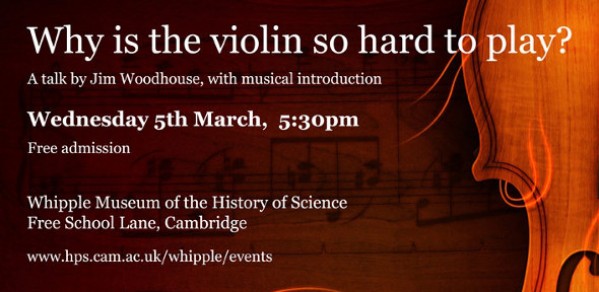
It is a question that has plagued budding musicians and frustrated school pupils for centuries: why is the violin so hard to play?
That very question is the title of a talk by the Department's Jim Woodhouse on Wednesday March 5.
Professor Woodhouse, will use scientific techniques to unlock the mysteries of musical sound. The talk at the Whipple Museum of the History of Science will reveal some of the science behind the art of violin playing.
The vibration of bowed violin strings has been investigated since the nineteenth century, and in recent decades increasingly complex and realistic mathematical models of this motion have been developed. This approach can be used to determine why one violin is 'easier to play' than another.
The answer concerns how the vibrating string responds to particular bowing gestures, but many details remain unknown.
Current research focuses on the frictional behaviour of rosin, the sticky material used to coat the hairs of a violin bow to make it work.
Before the scientific explanations however, there is a musical introduction from the Faure Quartet, four Cambridge Instrumental Award Holders.
The talk begins at 5:30pm on Wednesday and is free to all with no booking required.
Whipple Museum of the History of Science is located on Free School Lane, Cambridge, CB2 3RH.
This event has been made possible by a grant from Renaissance East of England.

